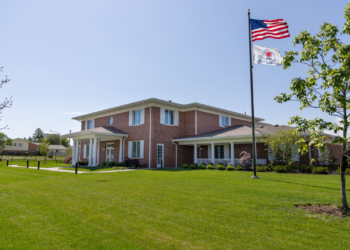Throughout my 13 years as a heating and air mechanic in the Army, I learned some of the ways service can impact health and well-being from battle wounds and repetitive stress injuries to mental health. While it’s common for veterans today to seek treatment for a variety of concerns, hearing loss has largely remained an invisible enemy, carrying the stigma of an issue traditionally related to aging. Now, thanks to the development of major advances in hearing aid technology and, as importantly, small form factor design and our increasingly technology-loving culture, hearing loss treatment is finally gaining the acceptance and respect it deserves among veteran patients.
A pernicious problem
Based on our modern understanding of both acute and chronic hearing conditions, military personnel today are instructed and encouraged to use proper hearing protection equipment across a range of duties and to abide by official standards intended to limit exposure to damaging levels of noise. Still, up to 18% of service members across the various branches seek help for hearing-related issues.
Veteran hearing loss is also unique in that it typically results from trauma — with high frequency hearing loss being the most common. The outer layer of our cochlea is responsible for hearing at high frequencies while the functionality for low frequencies is tucked away deeper in the canal. As a result, when there’s noise trauma, the high frequencies are much more exposed. The high frequency trend is also true of the general population, but what’s unique with veterans is that I often find their hearing loss is on one side, and not the other. The reason being veterans often take out their hearing protection on one side to communicate with their fellow soldiers more easily, either in-person or via radio.
Permanent hearing loss can result from a single overly loud noise such as an explosion or gunfire, but it can also build over time due to long-term exposure to noise levels that feel comfortable in the moment, but are unnatural and place undue stress on the ear. Because of this, hearing loss becomes more likely with age. Active duty service members are also very susceptible to tinnitus, a condition, often caused by hearing loss, in which the person’s ears begin misfiring frequency signals to the brain, causing them to constantly “hear” a phantom noise that isn’t actually there, such as a ringing, buzzing or humming.
Like any disabling injury or condition, hearing loss and tinnitus generally aren’t a person’s favorite thing to talk about, even with their doctor. Though hearing loss and tinnitus are two of the most common injuries reported to Veterans’ Affairs for disability compensation claims, their hidden nature and historical connection to old age sometimes discourage people from seeking treatment. Additionally, a significant portion of patients refuse to use hearing aids that can greatly improve their daily experiences because they perceive them as unsightly, embarrassing or shameful for a variety of reasons.
Furthermore, as with the majority of hearing loss patients, veterans often delay seeking treatment when they need it. The difference with veterans is that they are prone to getting hearing loss much younger than the general population. Soldiers in their 20s and 30s are grappling with hearing issues that others won’t face until their 50s and 60s. As a result, some veterans wait decades before being fit for hearing aids.
Modern solutions for an age-old problem
Today, I work with the general public at HearUSA, one of America’s largest hearing care retailers, helping clients find the right solution for their needs and budget to ensure they go home with a solution that’s tailored to their lifestyle.
In addition, I serve as an audiologist for soldiers and veterans at Camp Pendleton in California. Some of my key focuses involve helping them understand the severity of their condition, the cumulative effects of non-treatment and the advances that have been made in hearing aid technology. After all, every patient wants better hearing, but they aren’t all thrilled about the idea of wearing a hearing aid everywhere they go – part of my job is to convince them.
Luckily, advances in hearing technology have greatly increased the level of treatment and life improvement we can offer to those living with hearing loss or tinnitus. The latest hearing devices combine breakthroughs in battery power, sound processing and user controls to improve hearing in any situation.
For those that don’t want to be seen wearing a hearing aid, there are smaller and smaller rechargeable models being introduced each year that still deliver advanced features for pristine sound quality and user-friendly controls. These hearing aids also assist with tinnitus through amplification. By helping the wearer hear better, their brain no longer needs to create as much of a phantom sound, not curing tinnitus, but lowering its volume.
Education improves outcomes
It’s virtually impossible to track individual noise exposure in real time due to highly variable conditions, so education and treatment are the two best tools we have to protect hearing in the first place and to improve quality of life for veterans living with hearing loss. Now that we have access to much smaller hearing aids that can be worn as inconspicuously as earbuds, a lot more patients are willing and even excited to take action and regain their hearing independence.
I make sure my patients know hearing loss can hinder communication, affect relationships and work abilities, cause anxiety or depression and even further cognitive decline, so they understand the importance and value of early diagnosis and treatment. Like many things in life, an ounce of prevention is worth a pound of cure, and both hearing protection and hearing aids are effective preventative measures that limit damage and daily struggles.
Read comments










































